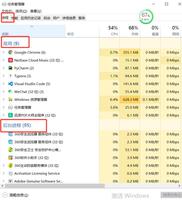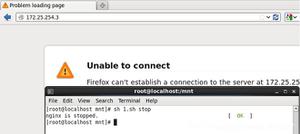Python初识一

一、Python的第一个程序
打开notepad++,新建一个.py文件,输入print('Hello World!'),保存
print('Hello World!')开始—>运行——>输入cmd——>输入python 空格 文件路径—>回车执行
二、变量
2.1、变量定义:变量就是把程序运行的中间结果临时存在内存里,以便后续的代码调用。
2.2、声明一个变量:
name = 'Tom'
name为变量名,Tom为变量
2.3、变量的命名规则:
1、变量名只能包含 字母、数字、下划线;
2、变量名不能以 数字 开头;
3、变量名不能是 关键字;
关键字:['and', 'as', 'assert', 'break', 'class', 'continue', 'def', 'del', 'elif', 'else', 'except', 'exec', 'finally', 'for', 'from', 'global', 'if', 'import', 'in', 'is', 'lambda', 'not', 'or', 'pass', 'print', 'raise', 'return', 'try', 'while', 'with', 'yield']/
2.4、变量名命名推荐方式:
1、可描述性: 让读代码的人能容易理解变量名所代表的含义
name age 能让人想到 名字和年龄 a b c 不知所云
2、易读性:当变量名较长时,推荐用驼峰体和下划线
1 NumStudents = 50 #驼峰体2 Num_Students = 50 #下划线隔开
3 numstudents = 50 #没有格式,连在一起的效果
3、不要用中文,不要用拼音,不要太长
三、常量
d常量即指不变的量,如pai 3.141592653..., 或在程序运行过程中不会改变的量
python中常量全部用大写表示 如:身份证编号 ID = ‘123456789’ 中国建国时间 BIR_OF_CHINA= 1949
四、注释
4.1、单行注释: 代码前输入 # 符号
4.2、多行注释:单引号''' ''' 或 """ """
1 # print('hello kitty') 单行注释 2 '''
3 name = 'tom'
4 age = 18 单引号
5 job =' teacher'
6 '''
7 """
8 name = 'tom'
9 age = 18 双引号
10 job =' teacher'
11 """
五、基本数据类型
5.1、int (整数类型)
32位机器上,整数的位数是32位,取值范围-2**31~2**31-1,即-2147483648~2147483647
64位机器上,整数的位数是64位,取值范围-2**63~2**63-1,即-9223372036854775808~9223372036854775807
整型能进行 + - * / % 等运算
python 2.2后没有 long(长整型),都是整型int
5.2、str (字符串类型)
1 ta="hello world!"
Python 里面所有加引号的,都是字符串
字符串拼接:
1 相加2 s1 = "abc"
3 s2 = "xyz"
4 s3 = s1 + s2
5 print(s3)
6
7 乘法
8 s1 = "abc"
9 s2 = s1 * 3
10 print(s2)
str:简单少量的存储数据,并进行相应的操作
5.3、bool (布尔值)
True(真) 或 False(假)
1 或 0
5.4、列表 list
list_demo = [1,2,3,4,5]
5.5、元祖 tupe
tupe_demo = (1,) #一个元素,要加逗号
tupe_demo1 = (1,2,3)
5.6、字典 dict
dic_demo = {'Name' : 'Tom','Age' : 18}
六、用户交互
input() Python 2 里面的是 raw_input()
1 username = input("请输入用户名")2 psw = input("请输入密码")
3 print(username,psw)
七、格式化输出
格式化输出是通过print()等函数向指定地方输入指定的内容
占位符 % (%s 字符串 %d 整型 )
1 name = input('请输入你的名字:') 2 age = input('请输入你的年龄:')
3 job = input('请输入你的工作:')
4 hobbie = input('请输入你的爱好:')
5
6 msg = '''
7 --------------info of %s ---------------
8 Name:%s
9 Age:%d
10 Job:%s
11 Hobbie:%s
12 ----------------------------------------
13 '''%(name,name,int(age),job,hobbie)
14 print(msg)
1 #因为%被占位符用了,所以表示百分之多少的时候用两个百分号 1%%2
3 msg = "我的名字是%s,我的身高是%d,我的学习进度是50%%"%(tom,180)
4 print(msg)
八、条件语句 if
if 条件:
只有条件为真,执行
else:只有条件为假,执行
说白点就是2选1
if 1 == 1:print("True")
else:print("False")
if 1>2:
print("True")
else:print("False")
score = int(input("请输入您的成绩:"))if score > 100:
print("我去!一共才100分")
elif score > 90:
print("A")
elif score > 80:
print("B")
elif score > 60:
print("C")
elif score > 40:
print("D")
else:
print("你太low了...E")
九、while循环
while 条件:
循环判断条件真假,为真执行再循环,为假则跳出循环
count = 1while count < 11:
print(count)
count += 1
十、跳出while循环
跳出while循环
break; continue
break跳出整个循环,while就不执行了;
continue是跳出本次循环并进入下次while循环
print("hello")while True:
print("好好学习")
print("天天向上")
break
print("none")
1 count = 02 while count < 10:
3
4 count += 1
5 if count == 5:
6 continue
7 else:print(count)
while else
只有while正常循环完毕后,才会执行else
当while 循环被breake 打断,不会执行else
1 count = 02 while True:
3 count += 1
4 print("Loop",count)
5 if count == 3:
6 break
7 else:print("循环正常执行完了!")
8 print("----out of while loop----")
9
count = 0flag = True
while flag:
count += 1
print("Loop",count)
if count ==3:
flag = False
else:print("循环正常执行完了!")
print("----out ot while Loop----")
Demo:
用户登录(三次机会)并且每次输错时显示剩余登录机会(用到字符串格式化。)
1 username = 'boy'2 password = '123'
3 count = 0
4 while count < 3:
5 name = input('username:')
6 pwd = input('password:')
7 if name == username and pwd == password:
8 print('Login Successfully!')
9 break
10 else:
11 print("It's wrong! You have %d more chances."%(2-count))
12 if count == 2:
13 choices = input('Try again? Yes:')
14 if choices == 'Yes':
15 count = -1
16 else:break
17 count += 1
如果再多给3次机会
1 username = 'boy'2 password = '123'
3 count = 0
4 n = 0
5 while count < 3:
6 name = input('username:')
7 pwd = input('password:')
8 if name == username and pwd == password:
9 print('Login Successfully!')
10 break
11 else:
12 print("It's wrong! You have %d more chances."%(2-count))
13 if count == 2:
14 choices = input('Try again? Yes:')
15 if choices == 'Yes':
16 count = -1
17 else:break
18 count += 1
19 n += 1
20 if n == 6:
21 print('傻吊你试了6次了')
22 break
以上是 Python初识一 的全部内容, 来源链接: utcz.com/z/388895.html







